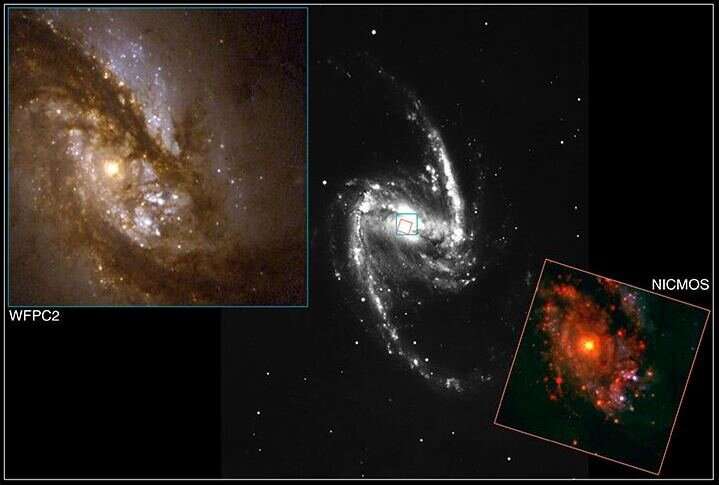The James Webb Space Telescope (JWST) continues to deliver stunning images of the universe, demonstrating that the years of development and delays were well worth the wait. The latest comes from Judy Schmidt, an astrophotographer who processed an image taken by Webb of the barred spiral galaxy NGC 1365. Also known as the Great Barred Spiral Galaxy, NGC 1365 is a double-barred spiral galaxy consisting of a long bar and a smaller barred structure located about 56 million light-years away in the southern constellation Fornax.
Measuring over 200,000 light-years in diameter, roughly twice as large as the Milky Way, NGC 1365 is noted for the way its wide arms extend from its central bar to give it a Z-like appearance. The galaxy was selected for observations by JWST because of its iconic nature and how much of its interior structure is obscured by dust. In particular, its second bar is more prominent in infrared images, and previous instruments (like the Hubble and Spitzer space telescopes) have been limited in terms of what they could visualize.
Astronomers theorize that this bar plays a crucial role in the galaxy’s evolution, drawing gas and dust to the core, forming new stars, and feeding the supermassive black hole (SMBH), which is about two million solar masses and rotates at close to the speed of light. It is also suspected that this region arose from a combination of dynamical instabilities in the region, possibly due to stellar orbits, density waves, the overall rotation of the disk, and the likelihood that the inner bar more rapidly than the larger bar.
The image was acquired by Webb’s Mid-Infrared Instrument (MIRI) and offers new insights into this galaxy’s inner workings. This includes the most-detailed look at the central barred region and the many smaller, wispier arms extending from it. The glowing center shows the SMBH (the bright dot in the middle) and halo-shaped star-forming region, and illuminated dust surrounding it. Bright patches are also peppered throughout the two larger arms, which appear more like extended archipelagos than single structures.

As Schmidt indicates, she processed the image using data provided by the Physics at High Angular resolution in Nearby GalaxieS (PHANGS) Survey team.
“Dusty, barred spiral galaxy NGC 1365: Interestingly, the dust bar isn’t nearly as prominent as it is in visible light. In the center is a modest active galactic nucleus (AGN). The circumnuclear dust is also quite striking. This time, I was happy to receive the PHANGS team’s reduction of the data. Makes it much easier because their mosaic was much better matched and aligned,” she notes.
NGC 1365 and other barred spiral galaxies are of great interest to astronomers thanks to new observations that indicated that the Milky Way could also be a barred spiral galaxy. Such galaxies are estimated to account for two-thirds of all spiral galaxies in the universe, and their study could reveal things about the formation and evolution of our own. Given its advanced suite of infrared optics, the JWST is well-suited to study the nuclei of these galaxies and observe the forces that drive things like star-formation, supermassive black holes, relativistic jets, etc.
Among its many scientific objectives, Webb will study parts of the universe that are largely inaccessible in visible light astronomy, such as molecular clouds (star-forming regions), the circumstellar disks that give rise to planets, and the cores of active galaxies. This includes the center of the Milky Way Galaxy, which has been very difficult to observe because of all the cosmic dust between it and Earth. These observations will reveal clues about its supermassive black hole (Sagittarius A*), the stars that orbit it, and the densely-packed “galactic bulge” surrounding it.





